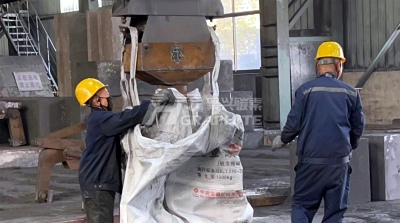【Technical】 What Causes the "Gas Expansion" Phenomenon During the Graphitization Process?

【Technical】 What Causes the "Gas Expansion"
Phenomenon During the Graphitization Process?
During the graphitization process, the irreversible volume expansion of carbon materials in the temperature range of 1400 to 2100°C is referred to as "gas expansion."
When carbon materials undergo high-temperature treatment in the mentioned temperature range, sulfur and nitrogen bonded to heterocycles in the carbon material structure are suddenly released in the form of gaseous sulfides and nitrides within a narrow temperature range. This results in a sudden increase in volume expansion of the carbon material, which is irreversible due to the internal structure damage of the carbon material. Therefore, when graphite products cool down from high temperatures, they do not recover.
"Gas expansion" creates significant pressure within the carbon material, leading to the formation of numerous pores and cracks, thereby increasing internal stress and reducing the strength of graphite materials. Thus, "gas expansion" is considered a harmful effect during the graphitization process of carbon materials. The sulfur and ammonia content in carbonaceous raw materials greatly influences the degree of "gas expansion." The higher the content of these elements in the raw materials, the greater the irreversible expansion rate during the graphitization process. Comparatively, petroleum coke tends to have slightly higher sulfur content, while pitch coke has slightly higher nitrogen content. The "gas expansion" in petroleum needle coke is mainly caused by sulfur, while in pitch needle coke, it is related to both sulfur and nitrogen. The degree of "gas expansion" is an important indicator for assessing the quality of needle coke.
The degree of "gas expansion" also depends on the microporosity of the raw coke, the pressure of the evolved gas, and the resistance of the coke pore walls. The micropores in the raw coke can accommodate the evolved gas, providing a buffer against "gas expansion." The pressure of the evolved gas depends on the rate and quantity of sulfides and nitrides released, the size and length of pore channels, while the resistance of the pore walls depends on their thickness and orientation. Contact us for the latest market news of graphitized products.
No related results found









0 Replies